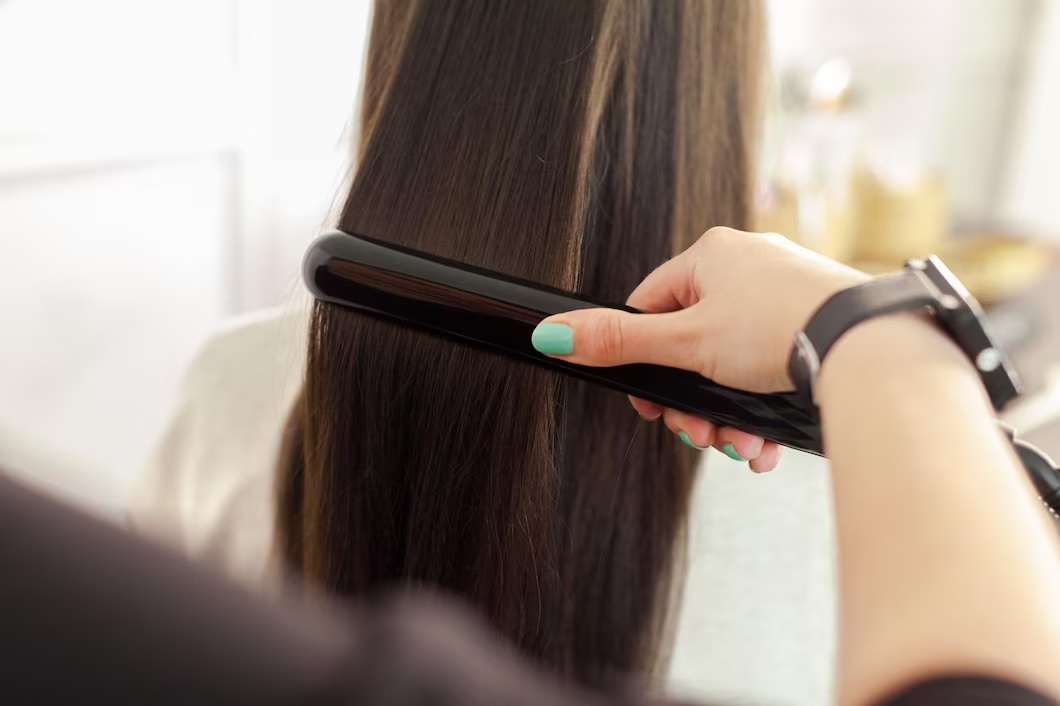In the ever-evolving world of beauty and haircare, innovative techniques that promise transformative results are continually sought after. Among these, a method known for delivering remarkably sleek and smooth hair textures stands out: thermal reconditioning.
Originating from Japan, this technique has crossed borders and won legions of fans worldwide. It offers a permanent solution to unruly, frizzy hair. We discuss the intricacies of this method, its benefits, and what it entails, providing a comprehensive guide to those considering this life-changing hair treatment.
The Science Behind Silky Locks
Thermal reconditioning, more commonly known as Japanese permanent hair straightening, revolutionises the approach to taming curly and wavy hair. The process involves chemically restructuring the hair’s protein bonds, followed by meticulous flat ironing to seal in the treatment, resulting in permanently straight hair. The allure of this treatment lies in its promise of low-maintenance, sleek hair that withstands humidity and requires minimal styling.
The treatment begins with the application of a chemical solution that breaks down the hair’s natural bonds. Once these bonds are broken, the hair is blow-dried and meticulously flat-ironed to create a new shape. A neutraliser is then applied to re-bond the structure of the hair, locking in the straightness. The entire process can take anywhere from three to six hours, depending on the hair’s length, type, and fullness.
Advantages of Opting for Thermal Reconditioning
The popularity of Japanese permanent straightening isn’t just due to its effective results. It also results in a dramatic reduction in daily maintenance. Those with difficult-to-manage hair textures find this treatment a godsend as it simplifies their routine, saving time and effort in hair styling. Beyond the practical benefits, this method imparts a glossy, smooth finish that often results in healthier-looking hair, given that less heat styling is needed thereafter.
However, potential candidates must understand that this beauty investment is best maintained with specific aftercare strategies. Utilising sulfate-free shampoos and deep conditioning masks and avoiding salt water achieves the longevity of the results. Regular trims and minimal use of heat tools help maintain the integrity and sleekness of the straightened hair.
Evaluating Suitability and Risks
While the benefits are compelling, thermal reconditioning is not suitable for everyone. The treatment works best on virgin or minimally processed hair and might not be ideal for those with heavily highlighted or strength-compromised hair. Potential side effects include dryness and breakage, particularly if the aftercare recommendations are not diligently followed. Therefore, a thorough consultation with a seasoned stylist is crucial to assess hair health and suitability for the treatment.
Cultural Impact and Stylistic Influences
Integrating Japanese beauty standards into Western markets underscores a broader cultural appreciation and adoption. The sleek, minimalist aesthetic promoted by Japanese hair techniques aligns with contemporary beauty trends and reflects a cross-cultural embrace of international beauty standards. Branching out from “traditional” salon or studio styles is no longer taboo.
Closing Considerations
Japanese permanent hair straightening offers a transformative option for those looking to simplify their beauty routines while enjoying the sleek, stylish appearance of straight hair. As with any chemical treatment, the key to success lies in choosing a reputable stylist, understanding the chemical process involved, and committing to appropriate hair care post-treatment. For those intrigued by the fusion of beauty technology and tradition, this method provides a compelling glimpse into the sophisticated world of Japanese haircare.
In an era where beauty routines are increasingly influenced by global trends, understanding the options available can empower consumers to make choices that align with their lifestyles and beauty goals. For more insights into how beauty practices are adapting to these global influences, consider exploring modern beauty innovations. This breakdown not only highlights the technological advances in the field but also promotes a deeper understanding of the cultural exchanges shaping our beauty standards today.

